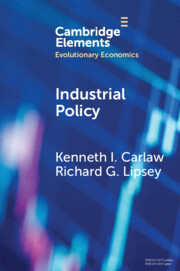Element contents
Industrial Policy
Published online by Cambridge University Press: 21 June 2022
Summary
- Type
- Element
- Information
- Online ISBN: 9781009227490Publisher: Cambridge University PressPrint publication: 14 July 2022
References
- 4
- Cited by



